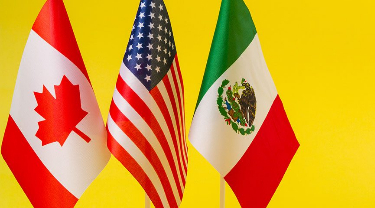While that isn’t the case, topping the list of renegotiating objectives was special emphasis on reducing U.S. trade deficits with NAFTA trading partners, Canada and Mexico.
“Since NAFTA was implemented in 1994, the U.S. bilateral goods trade balance with Mexico has gone from a $1.3 billion surplus to a $64 billion deficit in 2016,” states the USTR press release concerning NAFTA negotiations. “Market access issues have arisen in Canada with respect to dairy, wine, grain and other products—barriers that the current agreement is unequipped to address.”
Focusing on trade deficits is a skewed vision in the bigger trilateral trade picture, according to International Trade Expert Jayson Myers.
“You can’t say it’s unfair trade just because you have a trade deficit,” he said. “In fact, if you add in services, the U.S. doesn’t have much of a trade deficit with Mexico at all.”
Rojas agrees.
“Objectives related with reductions of trade deficits are not currently included in NAFTA and this is an issue that can’t be fixed—nor was caused-by the agreement itself,” he said. “This could be a tough subject that has the potential to complicate the negotiations.”
However, Mexican Economy Minister Ildefonso Guajardo is taking a glass half-full approach to the U.S. demands, stating that NAFTA 2.0 is about enhancing trade, not protectionism or paying attention to trade deficits.






